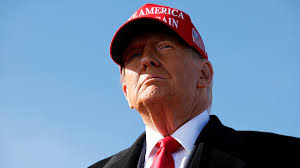Recently, the US has experienced a significant uptick in inflation, with a 3% increase in consumer prices in January 2025 compared to the previous year. This tick-up is raising warnings among economists and policymakers, particularly in the light of President Donald Trump’s plans to add new tariffs on imports. There is widespread fear that these tariffs could exacerbate increases in prices for everyday goods, adding to the cost of living for American consumers.
But what does that have to do with inflation and tariffs?
Inflation is the overall rise in the price of goods and services over time, which decreases money’s purchasing power. Inflation can be caused by multiple things the manufacturing cost or the rising demand for the same product or even due to the economic policies on the external side.
Tariffs are essentially taxes on imported goods imposed by a government. They are frequently employed to shield home-grown industries from external rivals by increasing the price of foreign goods. But those additional costs are typically passed on to consumers, resulting in higher prices on imported products.
Also read: Will Paramount Channels Disappear from YouTube TV?
Recent Inflation Trends
As of January 2025, the U.S. annual inflation rate stands at 3%, slightly higher than December 2024’s 2.9%. The increase is driven by rising costs in categories like housing, food, and gasoline. For example, egg prices are up 53% following an outbreak of avian flu limited supply. Beef and bacon prices have also risen considerably, up 5% and 6% respectively.
Proposed Tariffs by President Trump
President Trump has said he intends to impose new tariffs, including a 10% tariff on imports from China and a 25% tariff on goods from Mexico and Canada.) These steps are designed to shield American businesses and promote production in the United States. But the tariffs raise alarms that they will push up prices on a wide range of products, from cars to electronics to common household items.
Potential Impact on Consumers
Here are a few of the key effects that will be seen with the introduction of these tariffs:
Rising Costs: Imported goods that are covered by the tariffs will become more expensive. Retailers could level these extra costs on consumers, resulting in higher prices at the store.
Excluding domestic product price inflation: Cut competitiveness of foreign products means domestic producers can increase prices hence fueling inflation.
Supply Chain Disruptions: Tariffs can disrupt global supply chains, resulting in delays and added costs for manufacturers, which could also be passed on to consumers.
Economic Concerns
Economists are concerned that both the growing inflation and new tariffs could temper economic growth. Higher prices might cause consumers to spend less, which can hurt businesses and eventually lead to job cuts. And if inflation keeps going up, that could cause the Federal Reserve to change plans to cut interest rates, which would change the cost of borrowing for individuals and companies.
Government Response
In response to these issues, the Trump administration proposed measures, including deep cuts to federal spending. Elon Musk, in his capacity as Secretary of the Department of Government Efficiency, has suggested $1 trillion in spending cuts to combat inflation. But other experts warn that the kinds of muscle-straining cuts that some in the market are counting on could bring on an economic downturn if applied too aggressively.
Also read: JoAnn Fabrics Closing 500 Stores: What’s Happening?
Conclusion
These proposed tariffs, on the heels of a rising inflation rate, pose a difficult challenge for the U.S. economy. Although the goal is to save local companies, paradoxically, such a course can cause elevated prices for the public, ultimately making a negative impact on the economy. Policymakers will have to weigh these factors carefully on each side [of] the balance to provide for the continuation of economic stability and protect American households from wasting purchasing power.








